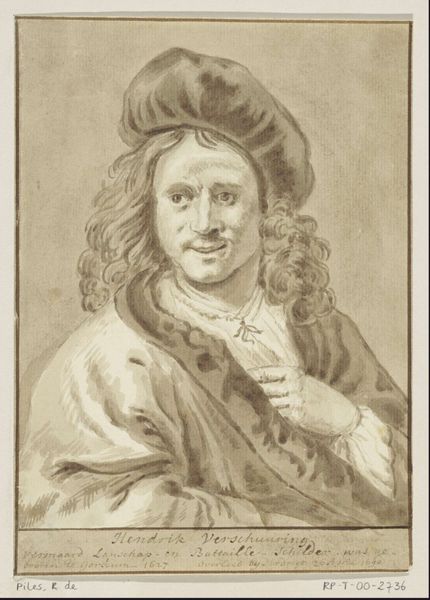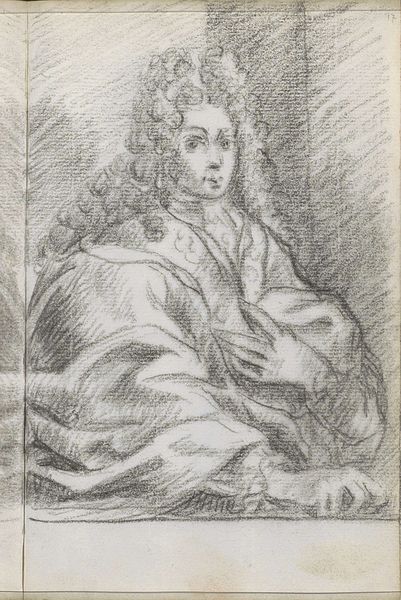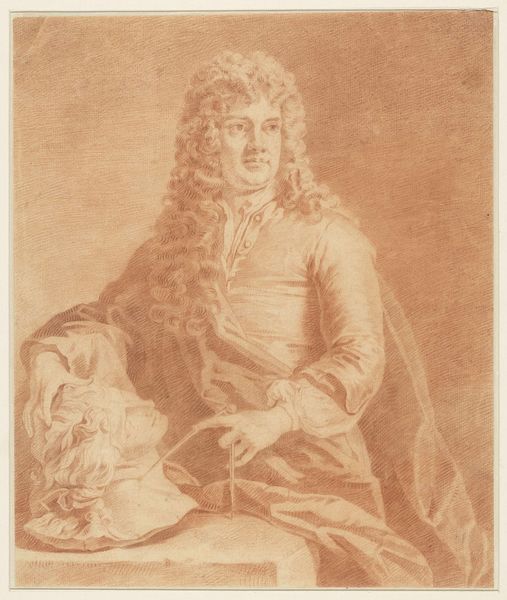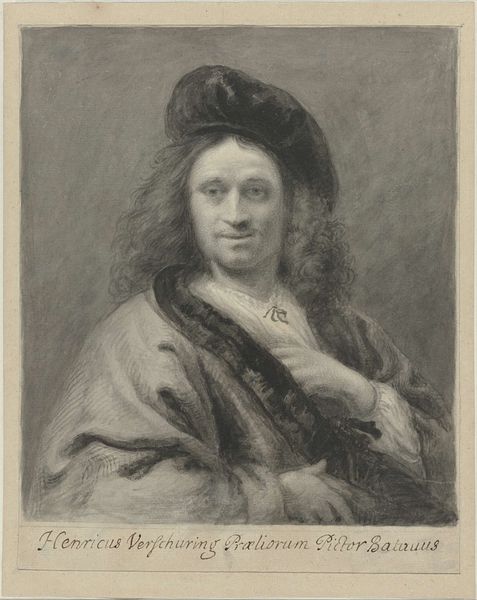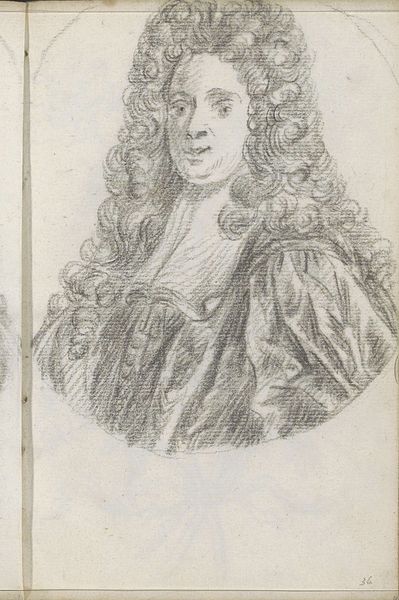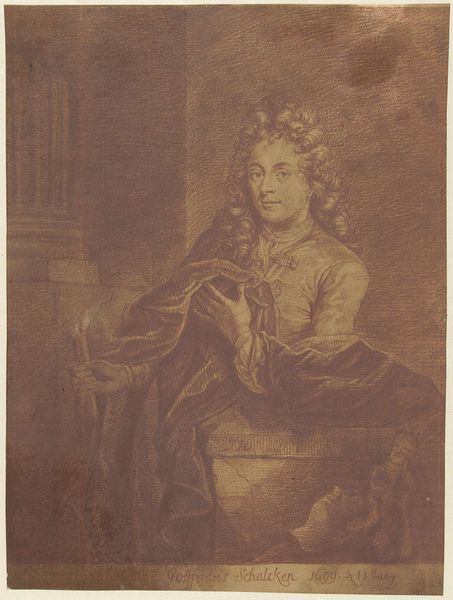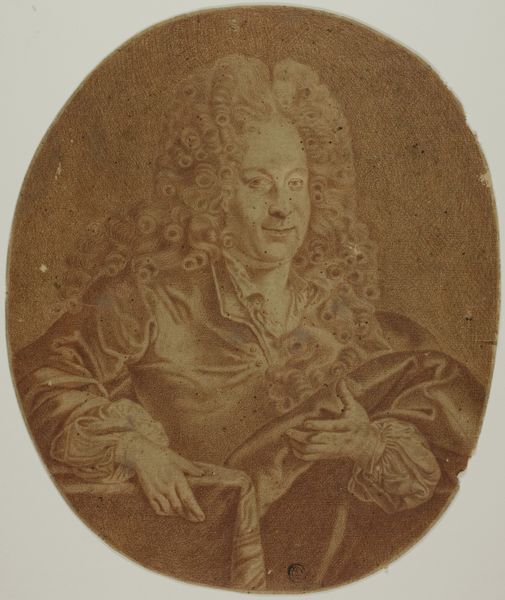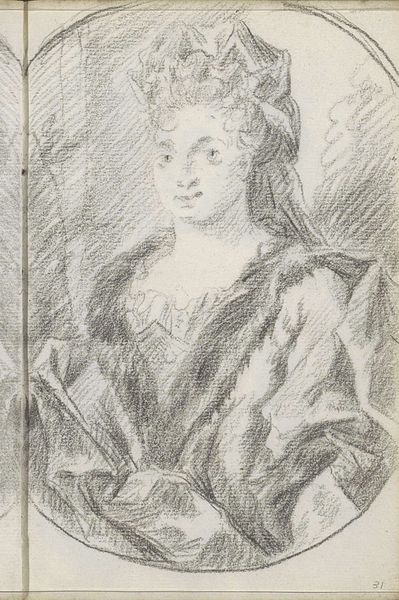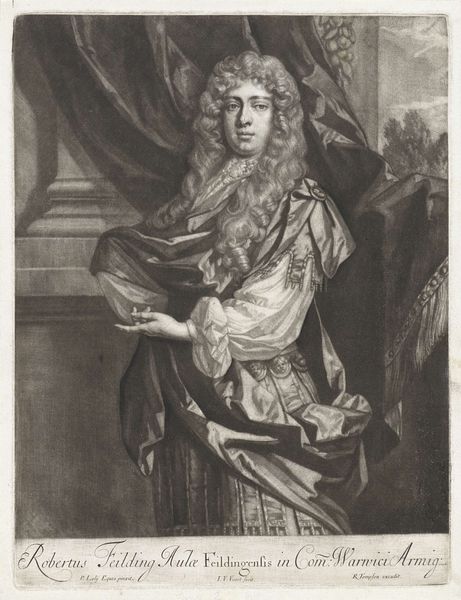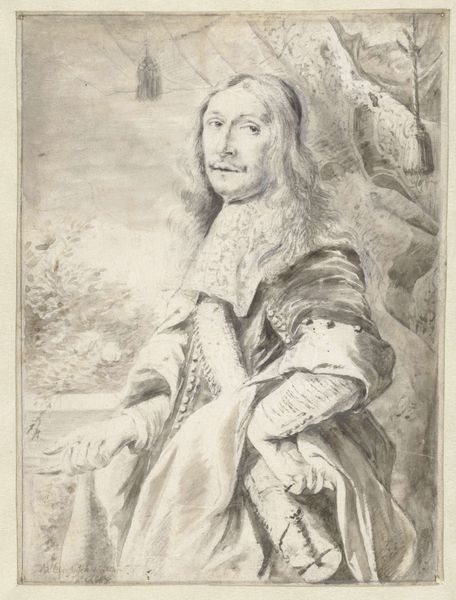
drawing, charcoal
#
portrait
#
drawing
#
dutch-golden-age
#
charcoal drawing
#
figuration
#
pencil drawing
#
portrait drawing
#
charcoal
Dimensions: height 201 mm, width 181 mm
Copyright: Rijks Museum: Open Domain
Curator: This is a drawing titled "Portret van de schilder Hendrik Verschuring," likely created sometime between 1645 and 1709. The artist is known as Roger de Piles, and it’s part of the Rijksmuseum collection. Editor: It strikes me immediately as being remarkably intimate, even unfinished. The soft charcoal creates such a vulnerable mood, softened features, those almost shy eyes. Curator: Indeed. Consider the medium - charcoal, a readily available material, facilitating swift execution. This suggests its role perhaps as a preparatory study or even a spontaneous likeness made within the artist’s social circles. Its appeal is tied to accessibility, to the workshop, the very act of sketching as a key process for artistic production and collaboration. Editor: Yes, but see how de Piles employs such simple means for rather complex visual effects. Notice the composition, a tight framing focusing on the upper body. Light dances subtly across his face, created through masterful gradations in tone, from the deepest blacks in his beret to the subtle highlights defining the planes of his face. It almost breathes. Curator: I'm more drawn to considering Verschuring himself—a painter represented by another painter. This portrait gains further significance when regarded as an element within the professional ecosystem, emphasizing artistic identity as crafted through interpersonal networks and exchanges. Editor: But look at how de Piles renders the texture of fabric, fur... You perceive their physical presence, but they are rendered almost as geometric abstraction in dark charcoal. Isn’t that the work of an extraordinary eye—translating the real into evocative patterns of form? Curator: What I think is intriguing is to question how "finish" impacts the painting’s monetary valuation and position. As well as, the access that we have today to witness art's creation through drawings that used to be restricted to the workshop and the artists themselves. Editor: Ultimately, I see an immediacy that connects us across centuries to this man, Verschuring. We catch a glimpse of his essence, subtly suggested by a knowing and skilled hand. It transcends simple representation, attaining a sort of melancholic beauty in pure form. Curator: Precisely, it opens up interesting insights on how drawing processes inform both social artistic circles, but also workshop practices of that period, inviting consideration around material economies and production as related to drawings.
Comments
No comments
Be the first to comment and join the conversation on the ultimate creative platform.
